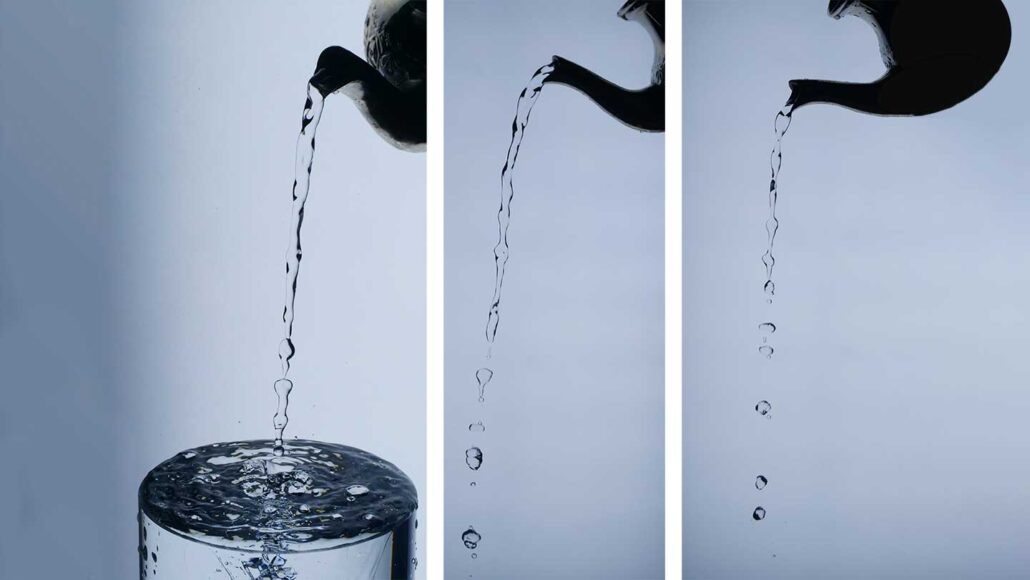Physics explains why poured water burbles the way it does
Its volume also depends on the smoothness of the poured stream of water

A stream of water poured from a teapot forms ridges as it falls. Then it breaks into droplets. This affects how air bubbles form in the liquid receiving the pour (bottom left). That, in turn, explains the different sounds of water poured from different heights.
Ho-Young Kim et al, APS 2023







